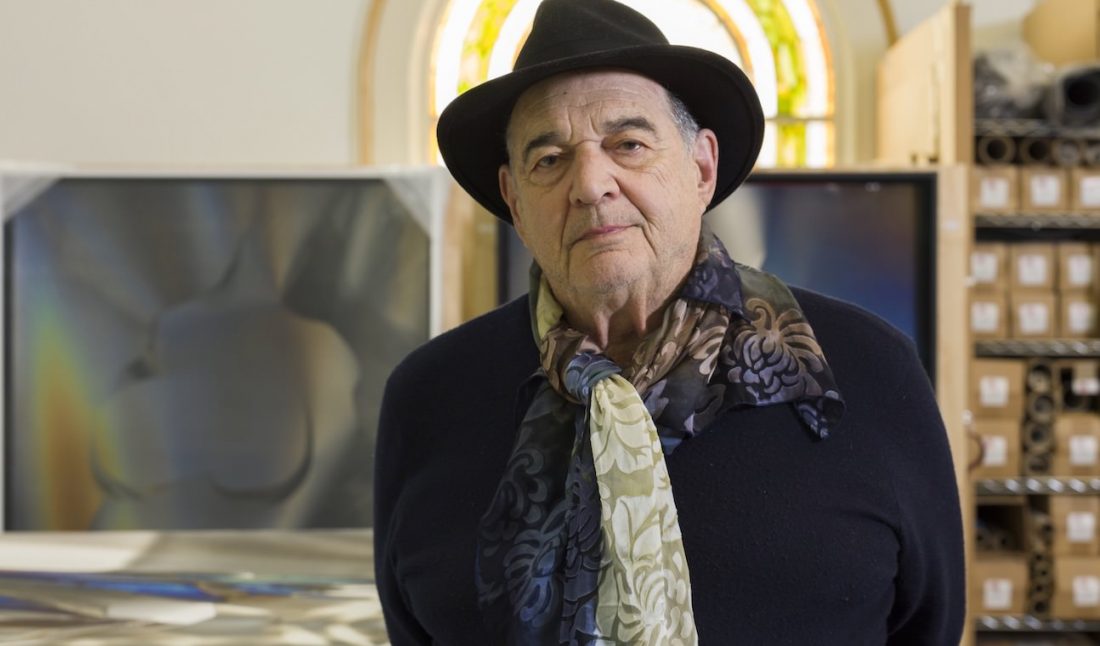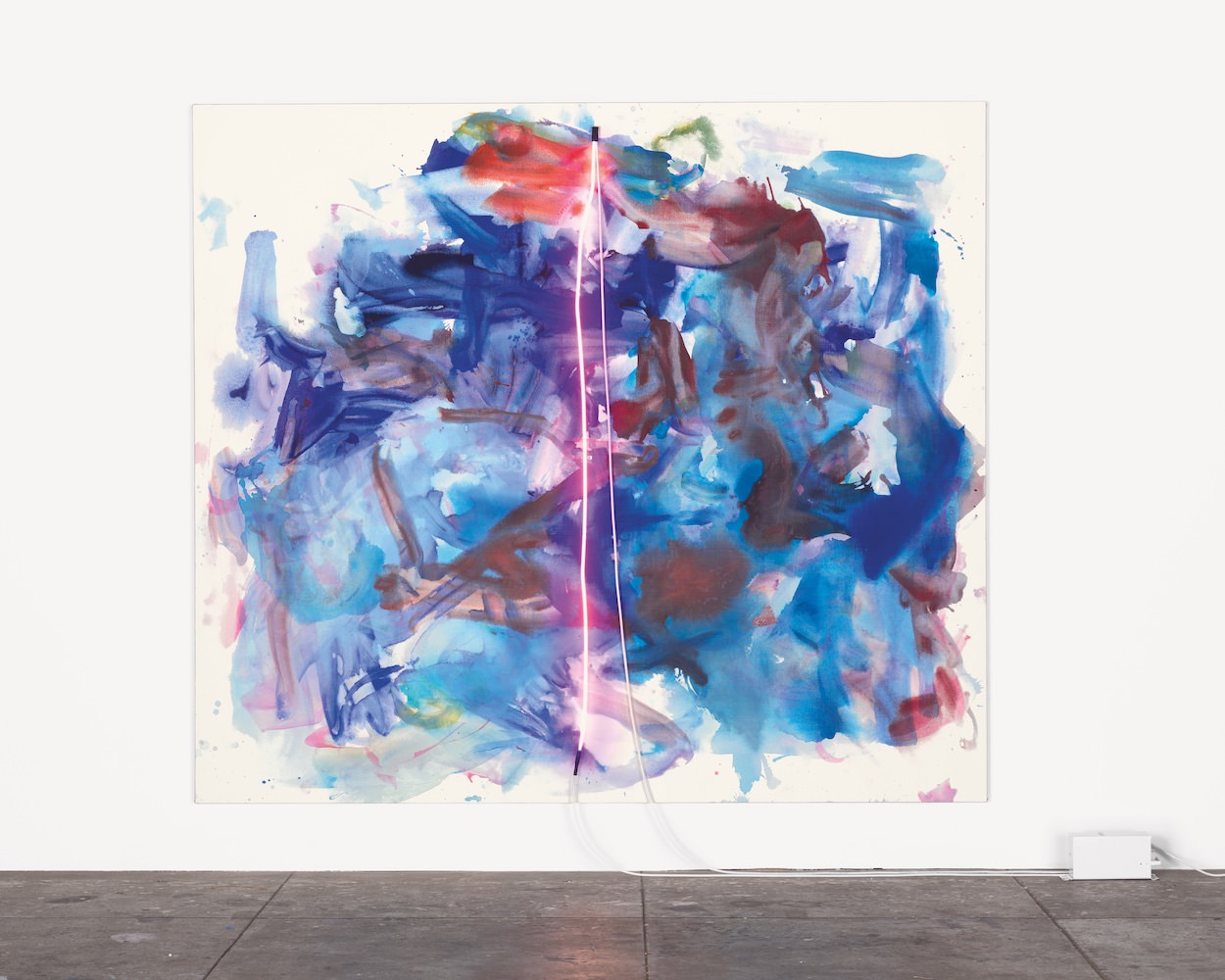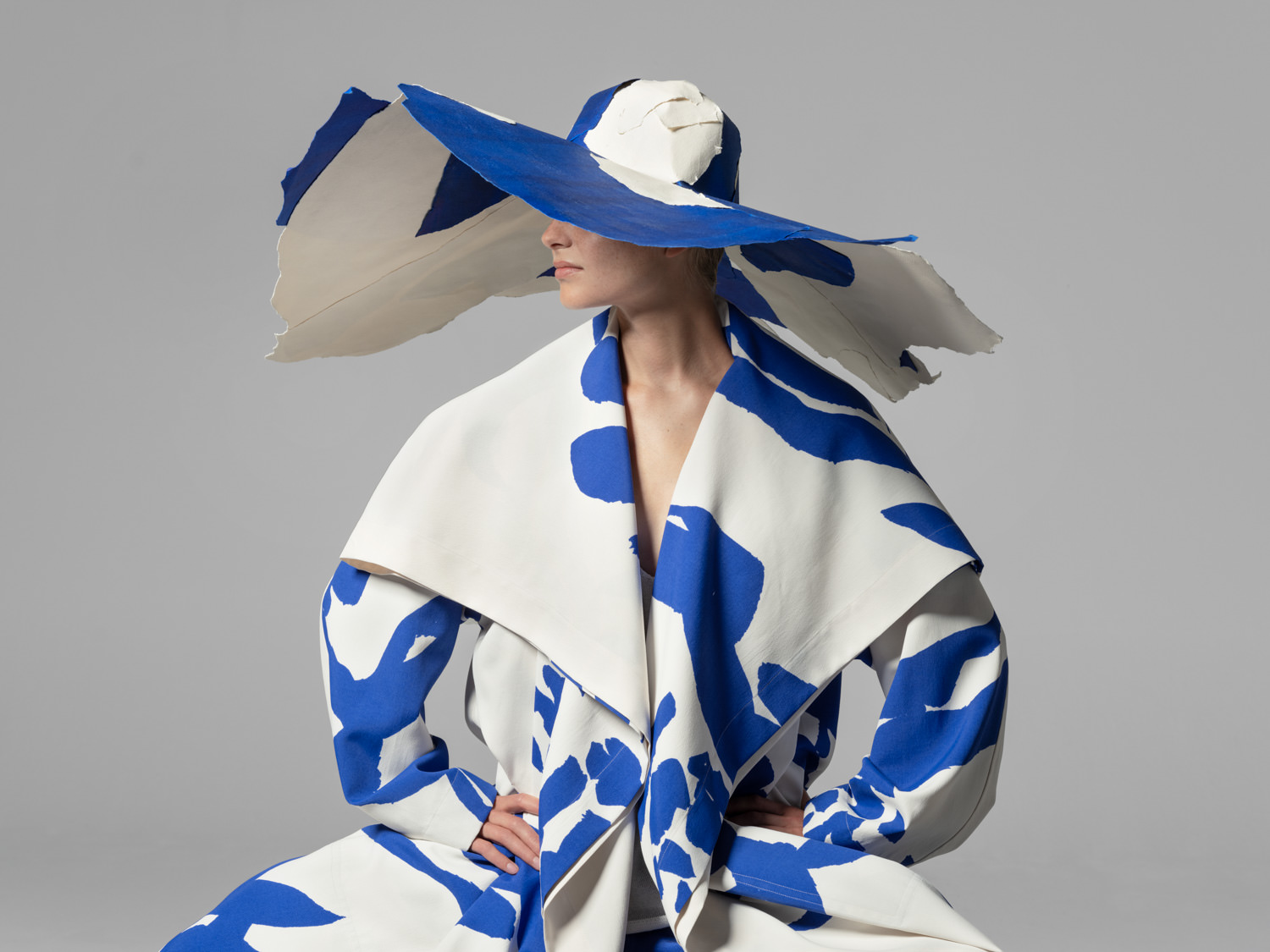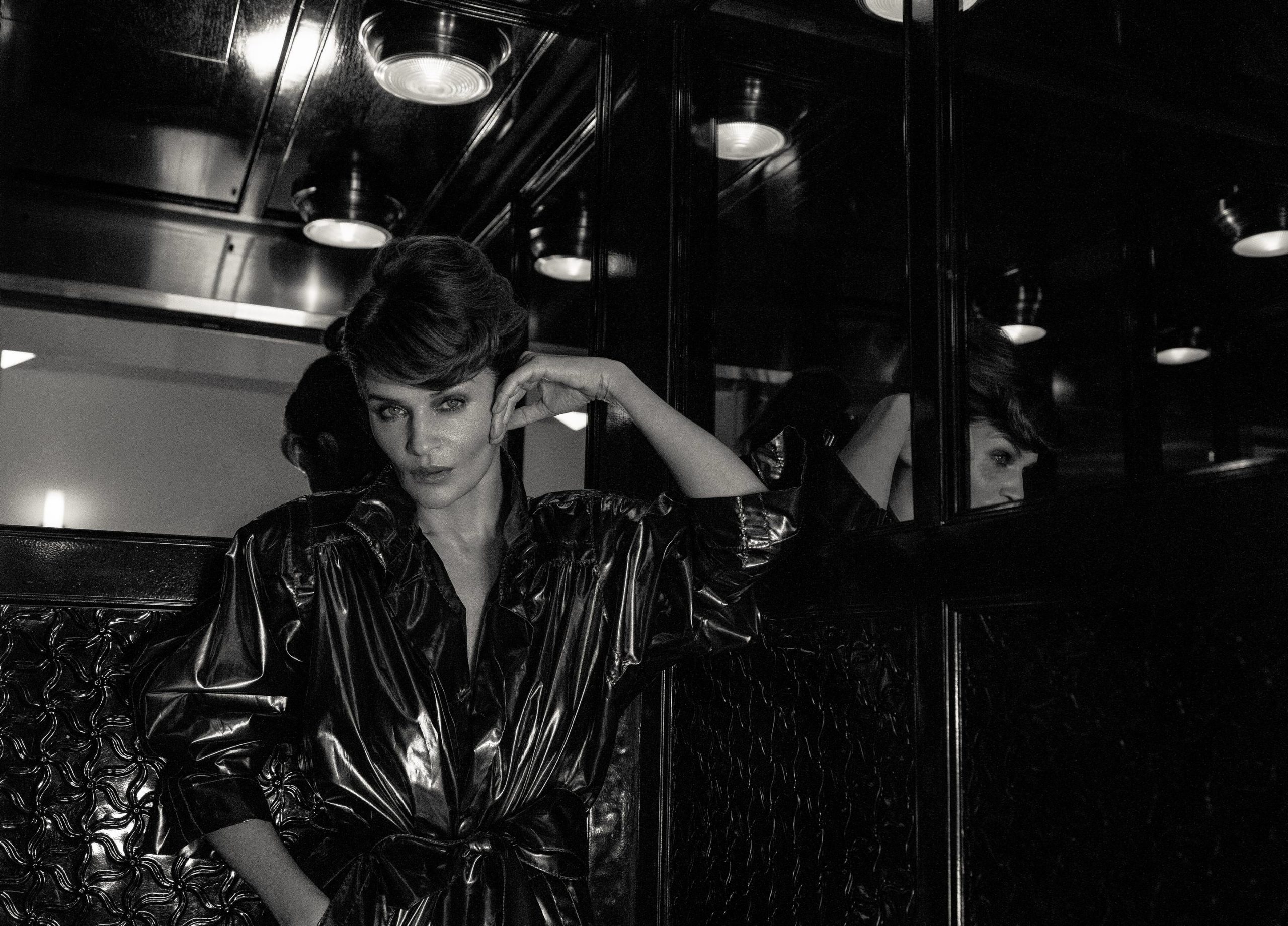Before the artist Larry Bell became the poster child of West Coast Minimalism, he was a Chicago kid handing in cartoons as homework and then an art student at Chouinard in Los Angeles. This was America in the 1950s when televisions were a newish addition to living rooms and wartime advancements in technology were strangely adapted for art’s sake.
Bell got a head start on his signature glass sculptures after dropping out of Chouinard and moving into a neglected building in Venice Beach. Rents were outrageously cheap and Venice was itself something of an oil field. Back in the early 1900s, the tobacco millionaire Abbot Kinney had turned the area into an amusement resort or a pop-up Venice à la Italy. He drained marshlands, dredged canals, and put in gondolas, an amusement park, and a pier with a roller coaster and aquarium. Then the Great Depression hit and Venice went under right as the land was tapped for oil. All bets were off. Derricks popped up beside houses and residents fled.
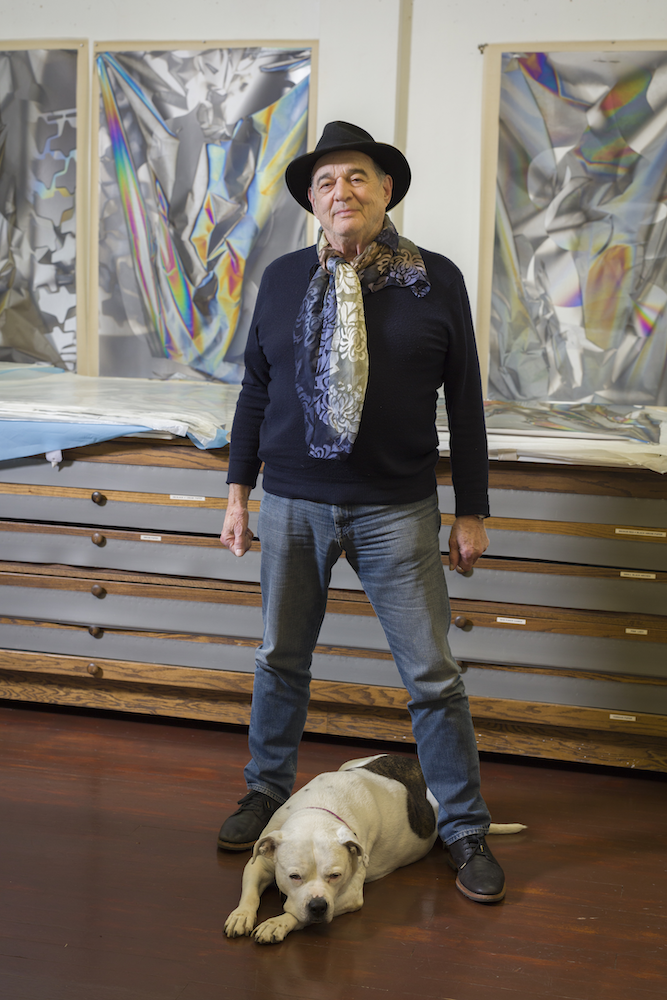 Photo by Fredrik Nilsen.
Photo by Fredrik Nilsen.
In Venice Beach, contemporaries like Doug Wheeler and De Wain Valentine had room to engage with the material properties of space and light. Bell worked with a high-vacuum coating system, for instance, to refine panes of glass and to fabricate sculptures that intervene in space. He turns 80 this year and with a recent retrospective at the ICA Miami and remarkable showcases at Hauser & Wirth, Larry Bell continues to astonish.
If you exhibit the shadows of sensory phenomena that generally evade an art audience, you risk not being seen at all. Whitewall recently asked Bell about the social world he arose from, and his answers brought us back to the practical realities that underlie just about any career. The worlds we make can quickly drain us, and there’s an undue amount of pressure to succeed quickly and visibly. Bell’s career has always been a more sustainable form of making ends meet, a working toward what few of us will ourselves to perceive.
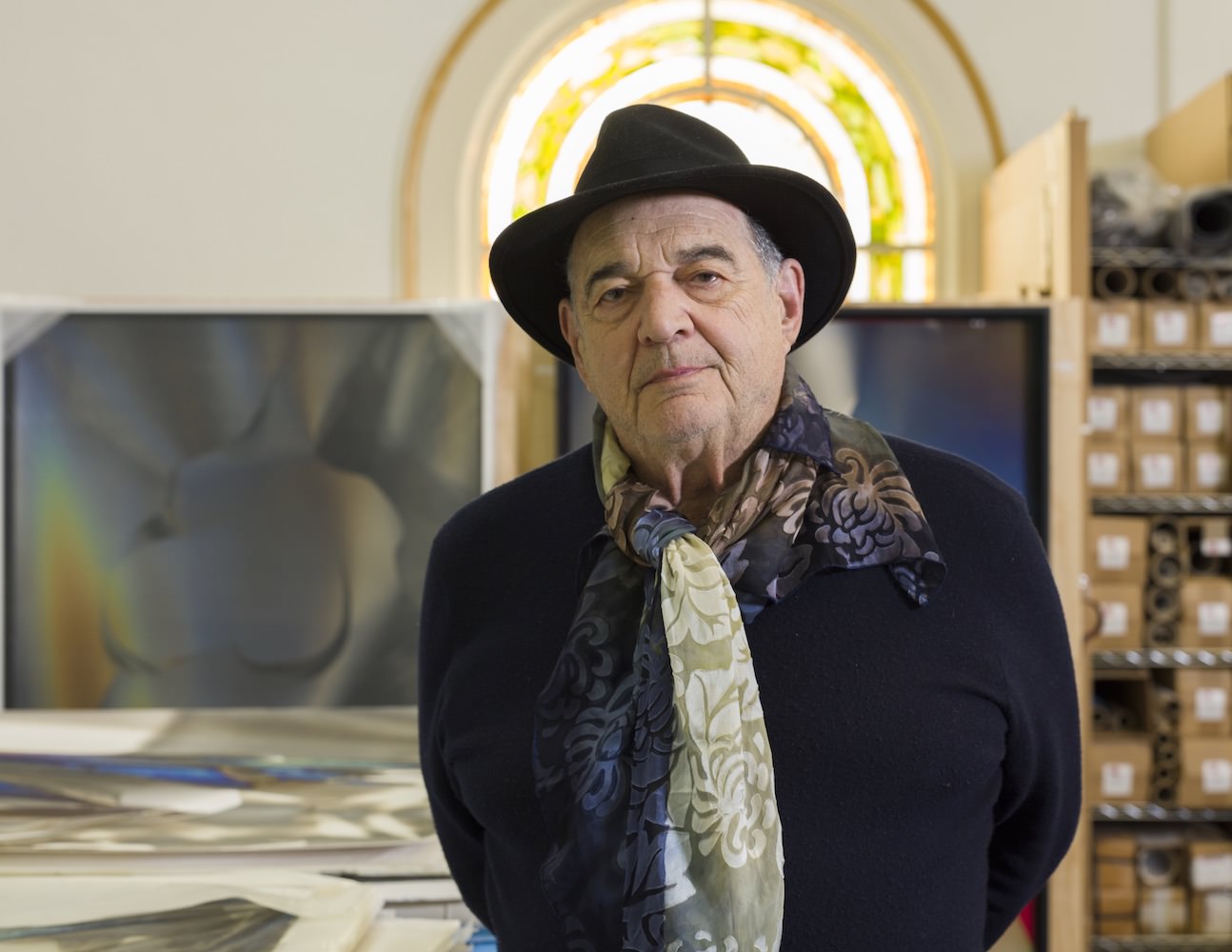 Photo by Fredrik Nilsen.
Photo by Fredrik Nilsen.
WHITEWALL: What are your thoughts on Los Angeles these days?
LARRY BELL: Well, I’m just about 80. I travel a thousand miles between studios [in Taos, New Mexico, and Los Angeles] every couple of weeks to hold my seams together. The traffic in Los Angeles is getting more and more difficult. When I get to Los Angeles, I usually end up staying in my studio and hardly going out at all. It is difficult to get anywhere, and I hate to drive.
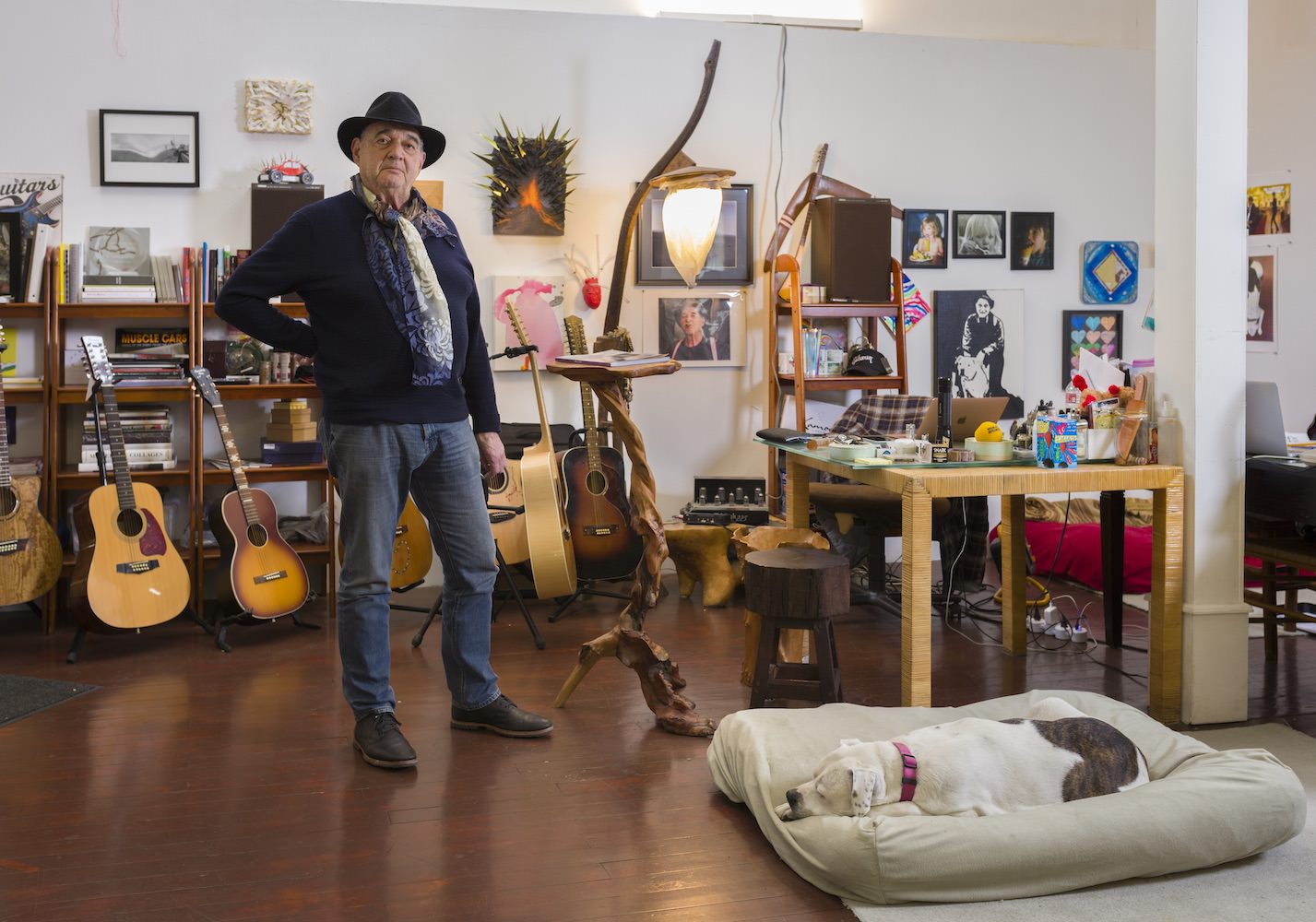 Photo by Fredrik Nilsen.
Photo by Fredrik Nilsen.
I mean, I love the drive between Taos and Venice. You get to see the mountains and the ocean. But once I’m in Los Angeles, I don’t drive very much. I take Uber rides, and those are subject to the same sorts of hassles of traffic. So I’m limited in my exposure to what’s going on in L.A. In the last several years, I’ve had a very good gallery that has made inroads for me. I feel like I’m still a participant in Los Angeles because of the work they do.
WW: What does recognition in your 80s feel like?
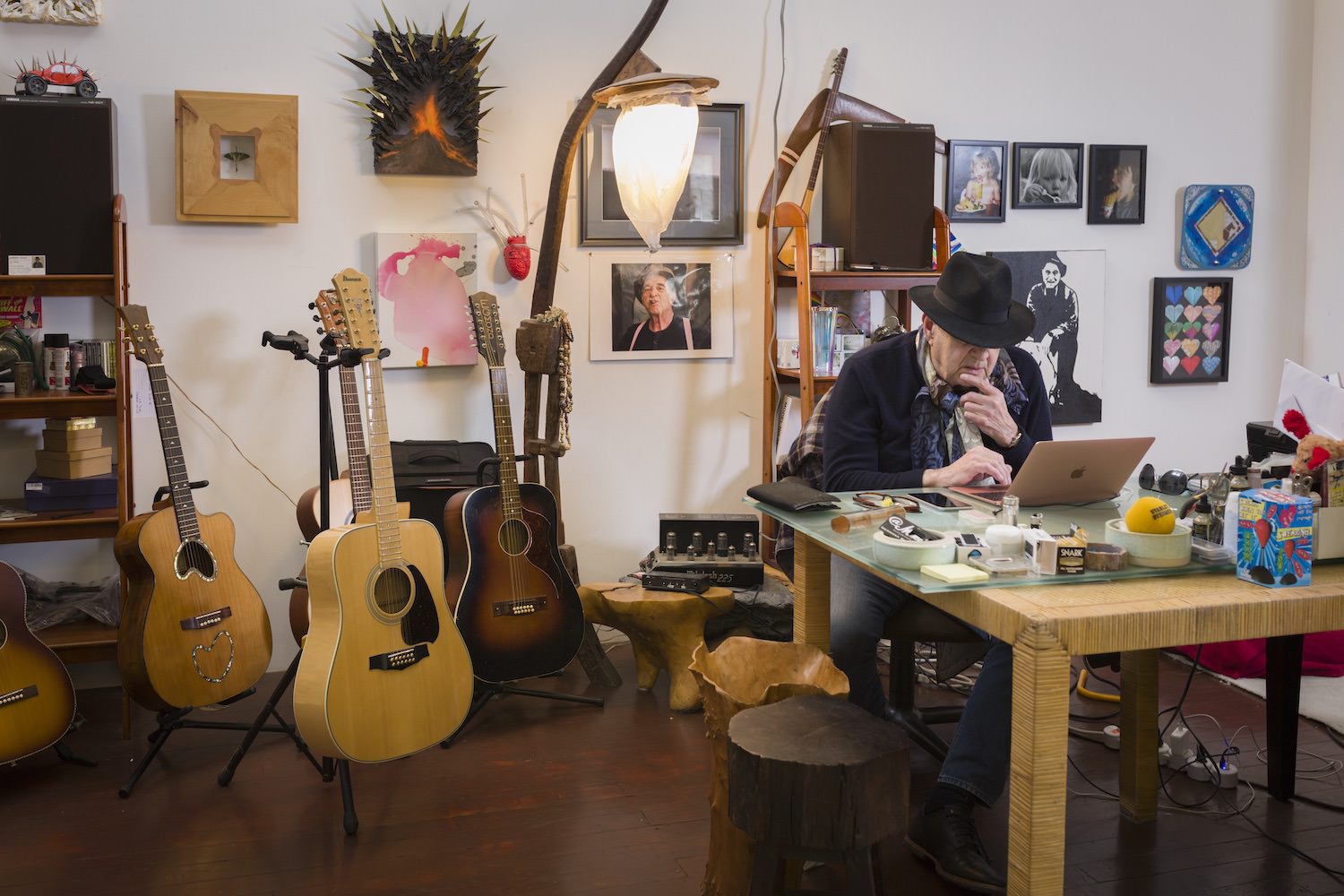 Photo by Fredrik Nilsen.
Photo by Fredrik Nilsen.
LB: Well, it’s great. I don’t owe anybody any money.
WW: What brought you to Venice in the 1960s?
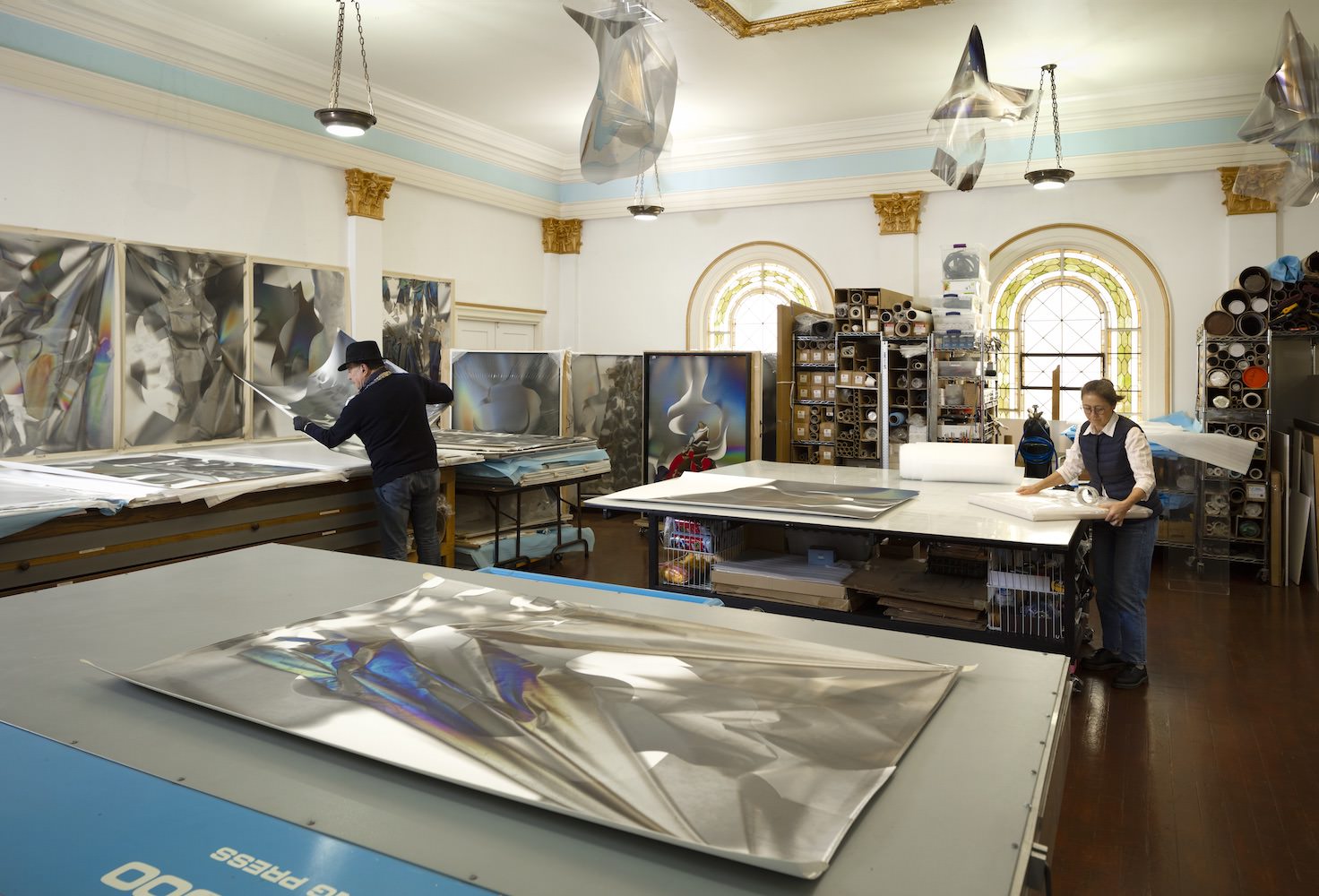 Photo by Fredrik Nilsen.
Photo by Fredrik Nilsen.
LB: When I got out of art school, I decided I was going to be an artist. I didn’t know exactly what that meant, or how I was to go about doing that. Except one of the mandatory things in my mind was having a studio. The studio was the place that you lived in and worked in, or just worked in, or whatever you did. You had to have that place.
And Venice, in 1959, in 1960, nobody wanted to go to Venice, because it was too bleak. There were a lot of deserted oil fields, and, because of the pollution and the contamination and the desolation of the place, one could rent or buy a space for practically nothing. You could buy a little house in the canals for two thousand dollars. You could rent a storefront on the beach for forty-five or sixty dollars a month.
It was a perfect place, because no one wanted to be there. It was quiet. The only community in the area was old and Jewish. There was a bunch of synagogues down along the beach. There are still a few today. You could rent a little apartment for eighteen dollars a month. That’s what Venice was! It was a place where you could go and not be bothered by anyone.
WW: Did you drift around L.A. at all? Besides the studio, what spaces drew you in?
LB: Well, the spaces that were most instrumental in forming my attitudes were the studios of my associates, my friends—people who lived inside the one square mile that was Venice. It was full of artists. I could walk across the street and walk into my buddy’s place. Bob Irwin or De Wain Valentine or Doug Wheeler, and so on. The quality of collaborators in the area was extraordinary. And that’s because of how cheap it was to live there.
There was nothing magical about the place. Well, that’s probably not true. The ionization of the air, the ocean and all that, it is very special. What people now pay an enormous amount for is clean air. This little area is under incredible financial pressure. And the coastal initiatives have precluded any rapid development. So Venice is going to stay pretty much the way it is now, except it is going to change one house at a time. That’s the deal.
WW: Did friends keep you from the work, or did friendship inform the art?
LB: Well, it goes back to the camaraderie I had with this group. One of our daily activities was to go to the thrift stores together. We searched for edgy neckties, things like that. All of Los Angeles was filled with interesting shops, music, all kinds of little cabaret places, and a lot of poetry was going on. But the writing, the attention given to words, was probably more profound in the Hollywood area than it was in Venice. Hollywood was bigger than Venice. It’s as simple as that. Hollywood was also quite cheap in those days. It was just a step above the slum that Venice was.
WW: Did you hang out with people in the film industry?
LB: Yes, sure. There were a lot of actors and writers. We all used to hang out at a place called Barney’s Beanery, which was in West Hollywood. It was a local bar, a funky little place right at the end of La Cienega Boulevard where all the galleries were. So after the Tuesday or Thursday night openings, everyone would go up to Barney’s and hang around—there was The Raincheck Room on Santa Monica Boulevard in West Hollywood as well.
A lot of actors and painters and people hung out there. There was a running dialogue between us. But it wasn’t based so much on intellect. It was about a very aggressive and biting humor. These places were funny. That’s what people were attracted to at the time. The kind of camaraderie that comes from great humor.
WW: You spent some time in New York. How would you describe the difference between the two cities? How did you relate to them as separate or engaged spaces?
LB: New York was not so different from Venice in the sense that I hung out in a few bars that catered to the artists. A place called Max’s Kansas City—that was a big-time hangout for people. Two of my closest friends during those days in New York were John Chamberlain and Neil Williams. Frank Stella as well, and a few other bozos like that. Although Frank wasn’t much of a bar hanger: Neil and John were, and everybody else that was there—Warhol, his whole gang.
There were sub-gangs to the Warhol people, too. Some of them were serious actors. And some of them just hung around Andy because he paid for their food. It was a quite a symbiotic scene. And it reminded me a lot of L.A. But I missed the beach.
New York in those days was quite inexpensive. That said, it was still two or three times the rent I paid in Venice. I stayed in New York after the success of a show I had at Pace Gallery. I had never sold anything in my life, and they sold everything before the show even opened. I thought maybe I was in the wrong place, being in Los Angeles. So I decided to get a studio and stay in New York.
When I made that decision, a lot of factors came into place that had to do with the kind of work I did and the equipment that I could buy in New York. So I got into a lot of technical stuff that I continue to play with. This all happened by accident. My first show went off to New York, and several of the cubes broke in transit. Well, we had almost a month to see if we could repair it before the show opened. We did, and during that time I met a guy who did the kind of plating that I paid someone to do in Los Angeles for me.
After the success of the Pace show, he suggested I buy the equipment and learn how to do it myself. The gallery was all for it and said, “Whatever we can do to help.” So I got a little studio on East Ninth Street, and I decided to stay.
What drove me out ultimately—I was in New York a little less than two years—was the weather. I couldn’t stand it. I was there for the blizzard of ’66, the blackout, and a couple of events that were not of my doing. I missed California because of the winter in New York. I never was a winter person.
WW: It is snowing here in New York today.
LB: We get snow here tomorrow. This is a ski area where I live now in Taos, New Mexico.
WW: When did you move to Taos?
LB: In 1973, but every month or two I’d go back to Venice. The first two years, though, I stayed in Taos. I just locked up the studio. I was having a wonderful relationship with a gal. Well, my whole life changed, really. I started to have a family. Everything was new to me. I’d never been to a place like it—as a white Jew, I was the minority in an area that was predominately Catholic and Hispanic. It was a different social world. It was fantastic. That’s what made me stay.
We get cold here, too. But, it’s a different kind of cold. There’s no wind or water in the air. When we have a snowstorm, the humidity level might be all of three percent. So it’s a different kind of cold. It gets boring after a while. There are not many cars like in slushy New York. It’s so awful [laughs].
My studio in Taos is directly across the street from where I live. I don’t have to go very far to work. And when the weather is real bad here, I don’t want to work.
I don’t mind being in the studio where I’m supposed to be. We have these on/off power shortages. Someone scratches their ass on a power line, and the power goes off for a second. That’s the kind of stuff we deal with. When the weather is inclement, I don’t actually work with my equipment and tools. I do other things.
WW: Do you like to be alone when you work?
LB: Well, I have a very good crew of assistants. When I’m working, there’s always two or three others that are here working with me on things. I like that. It’s almost like family. Actually, my son has recently begun to work with me. So it’s terrific. I think of the crew as family.
I’m pretty much in my own head when I’m working. Everyone else seems to mimic that. When things start to get difficult or weird, it’s usually broken by a joke, and we come back down to reality again. That humor thing is quite important to me.
WW: What was your relationship with Donald Judd?
LB: Well, he was a very close friend of mine. He came and lived with me for a couple of months when he was looking for the place that became Marfa. He had spent some time in El Rosario in Baja, Mexico. He was excited and had all these pictures to show me. He and his two kids—they were just babies at the time—and his wife, Julie, stayed with me in Venice.
I actually think I was somewhat responsible for persuading him to stay in the States. In my mind, he had to find a place that people couldn’t just take away from him, and there would be no recourse. At that time, foreign nationals couldn’t legally own property. Whatever deals you made with the landlord or someone else—you were risking everything. They could just throw you out, because in their constitution they wouldn’t let foreign nationals own property. So Don kept looking and came across Marfa. The irony is that Marfa looked exactly like El Rosario.
WW: What kind of time did you spend in Marfa?
LB: I did a show there a couple of years ago. I stopped going down there when Don died.
I liked to go down and hang out with him, and that’s the only reason why I went there—to hang out with him. He was a very amusing guy. He had what appeared to be a very strict sense of purpose, but, again, I found him to be one of the most amusingly odd people I’ve ever met. I really liked being around him. We hit it off really well.
WW: Judd was famously specific about the ways to interact with his work. Is there an ideal way for you? Or do you understand it differently?
LB: I have a serious hearing loss that wasn’t diagnosed until I was in my midforties. I didn’t get into the dialogue or the debates of the time. I couldn’t hear it. I tried not to read it. I tried to stay out of it all.
I don’t know why I work. I do the things that I do because I enjoy the questions. I don’t need to think of the things that I do as art. I think of them as evidence of some kind of investigation. The investigation in general has been, if anything, the study of the interface of light and surface. The evidence has been a lot of different things. It’s been three-dimensional, two-dimensional, nondimensional. It’s been liquid dimension—all kinds of interesting things that were triggered by some goofy thought.
I don’t have any demands on the audience, or want them to view the work in a very specific way. And there’s no way that I can control the distribution of the work either—I would rather spend my calories doing other things than trying to tell other people what to do.






